- Home
- David Weber
The Universe of Honor Harrington mth-4 Page 3
The Universe of Honor Harrington mth-4 Read online
Page 3
In addition, smaller ships with less powerful sails can trim them much more rapidly and with greater precision. In wet-navy terms, smaller ships tend to be "quicker in the stays," able to adjust course with much greater rapidity and to take the maximum advantage of the power available to them from a given sail force. This means that a smaller ship with an aggressive sail handler for a captain can actually turn in a faster passage time over most hyper voyages than a bigger ship. There are, however, some passages (known to starship crews as "the Roaring Deeps") where exceptionally powerful, exceptionally steady grav waves operate. In these regions, the bigger ship, with its more powerful sails, is able to make full use of its theoretical advantages and will routinely run down smaller vessels.
In sublight movement, the larger vessel's more powerful sails (which equate to a more powerful impeller drive, as well) do not give it a speed advantage because of the nature of the inertial compensator. The curve of the compensator's most efficient operation means that a smaller vessel (with a smaller area to enclose in its compensator field) can pull substantially higher accelerations, and no amount of brute impeller power can create an artificial grav wave with a sufficiently deep inertial sump to overcome this fundamental disadvantage of a large ship. Capital ships thus are as fast as lighter warships in sustained flight but tend to be slower to accelerate or decelerate.
The tuning or trimming components of a Warshawski Sail generator are its most expensive and quickest wearing parts, and they wear out much more rapidly on more powerful generators with their higher designed power loads. Because of this, bulk carriers tend to use relatively low-powered sails and the lower hyper bands, which limits their practical speeds to perhaps 1,000-1,500 c. Passenger ships and those vessels specializing in transport of critical cargoes accept the higher overhead cost associated with more powerful sails and run in the range of 1,500-2,000 c. For the most part (though there are exceptions) only warships are designed around the most powerful sails and compensators their displacement will permit, giving speeds of up to 3,000 c. A bulk carrier's tuning components may last as long as fifty years between replacements and those of a passenger ship up to twenty years, but a warship is likely to require complete tuner overhaul and replacement as frequently as once every eight to ten years. On the other hand, a warship may spend decades "laid up" in orbit, making no demands at all upon its sails, so the actual life span of a given set of tuners may vary widely between ships of the same class, depending upon their employment history.
(3) The Mechanics of the Diaspora
It was discovered early in the Diaspora that the maximum practical safe speed for a sublight ship was approximately .8 c, as radiation and particle shields can not protect the vessel above that velocity.
The generation ships were built as complete, life-sustaining habitats oriented around the smallest practical self-sustaining population and designed to boost to that velocity at one gravity. In the long term, onboard gravity was provided through centrifugal force. In addition to their human passengers, the generation ships also had to provide for all terrestrial livestock and plants which would be required to terraform the colonists' new home for their survival. Even aboard these huge ships, space was severely limited, and many early colonial expeditions reached their destinations only to come to grief through the lack of some essential commodity the settlers had not known to bring along. This sort of disaster became less common after about 800 pd, when the original, crude hyperships made it possible to conduct extensive surveys of potential colony sites before the slower colony ships departed, but by that time the generation ships were a thing of the past, anyway.
In 305 pd, cryogenic hibernation finally became practical. It had long been possible to cryogenically preserve limbs and organs, though even the best anti-crystallization procedures then available were unable to prevent some damage to the preserved tissues. But where minor damage to an arm or a liver was acceptable, damage to a brain was not, and the early cryogenic pioneers' enthusiastic predictions about indefinite suspension of the life processes had proven chimerical.
It was Doctor Cadwaller Pineau of Tulane University who, in 305, finally cut the Gordian knot of cryogenic hibernation by going around the crystallization problem. He found that by lowering the hibernator's temperature to just barely above the freezing point he could maintain the physiological processes indefinitely at about a 1:100 time ratio. In other words, a hibernating human would age approximately one year for every century of hibernation, and his nutritional and oxygen requirements were reduced proportionately. Over the next several decades, Pineau and his associates further refined his process, working to overcome the problem of muscular atrophy and other physiological difficulties associated with long comatose periods, and eventually determined that optimum results required a hibernating individual to rouse and exercise for approximately one month in every sixty years (ie., after six physiological months), which remained a fixed requirement throughout the cryogenic colonization era.
What this meant was that the life support capabilities of a cryo ship could be vastly reduced in comparison to those of a generation ship. Moving at .8 c, the colonists experienced a 60% time dilation effect; in other words, each sixty-year period of hibernation used up one century of voyage time by the standards of the remainder of the universe. Thus an entire one-century voyage could be made without a single "active" period and would consume only 7.2 apparent months of the traveler's life span. Longer voyages would require periodic awakenings, but they could be staggered, permitting the currently roused crew to use only a fraction of the life support the entire crew would require. The result was to permit far larger numbers of colonists to travel on a given sized ship with a far lower subjective time passage.
A further boost to colonization came about in 725 pd with the advent of the first hyper drive. The casualty rates among early hyperships were so severe that it took a rather daredevil mentality to go aboard one, and colonists weren't normally noted for that sort of personality. To claim a new home world they would take risks, yes, but not risks they could avoid.
But what the hyperships provided was a survey vehicle which could travel more than sixty times as fast as a sublight ship, and the people who went in for discovering and exploring (as opposed to settling) new worlds had just the sorts of mentalities to risk hyper travel. A situation thus arose in which survey ships, generally operated by private corporations, undertook the high-risk job of locating potential colony sites which were then auctioned to prospective colony expeditions. Even with the hyper drive, this required that everyone involved take a very long view of things, but humanity adjusted to that just as it had once adjusted to the novelty of instant communication to any point on a single planet.
It is believed that the first Warshawski Sail colony ship was the Icarus, which departed Old Earth on September 9, 1284 pd, under the command of Captain Melissa Andropov (and, despite its name, provided over two centuries of dependable, reliable service before it was finally scrapped in 1491 pd), but for well over five hundred years, the dichotomy of FTL hypership survey expeditions and sublight hibernation colony transports remained the standard.
When the transition finally occurred, there were several very unfortunate instances in which unscrupulous operators used the new hyper sail technology to pass hibernation ships en route to their new homes. When the original colonists arrived, it was only to find well-established (and armed) claim-jumpers already squatting on their planned home worlds. If there was an already established colony in the vicinity, it might take a hand to assist the original colonists, even to the extent of lending military aid to eject the claim-jumpers, in order to discourage such unsavory elements from ruining the neighborhood. If there was no such well-inclined planet in the vicinity, the original colonists were out of luck, particularly since their technology might be several centuries less advanced than that of the thieves they confronted. In some cases, this created a domino effect. Expeditions which found themselves dispossessed of their colony s
ites often lacked the resources to return whence they had come (even if they had the inclination) and many opted to risk settling an unsurveyed world if there were stars with habitable planets (or which were likely to have such planets) in the vicinity. Many of them came to grief as the old generation ship colonies had in attempting to settle worlds other than the ones they had planned their original expedition's equipment list to meet, and those which did not often wound up displacing yet another group of legitimate colonists. Other such instances ended far more happily, with the second group of settlers discovering a world which was already partly settled and a group of "squatters" who paid their own way with the improvements they had already made and were integrated peaceably into the ranks of the "legitimate" colonists.
With the advent of Icarus and her later sisters, however, the entire pattern of colonization shifted. It was now possible to make a 500 light-year voyage in barely two-and-a-half years, an interval which dropped steadily as improvements in Warshawski technology became available. Hibernation was still used on most colony ships, but now it was simply to cram in the largest possible number of passengers, not a necessity. Indeed, as higher and higher speeds became possible, the hibernation features began to fall by the wayside.
(4) The Star Kingdom of Manticore
(A) Founding and Early History
The original colony expedition to Manticore departed Old Earth on October 24, 775 pd, aboard the sublight hibernation ship Jason for the Manticore Binary. Manticore, approximately 512 light-years from Earth, was a G0/G2 distant binary first confirmed to have planets in 562 pd, by the astronomer Sir Frederick Clarke. Its distance from Sol was such that the voyage would take 640.5 years (just over 384 subjective years), requiring that each colonist be waked for exercise seven times. Accordingly, the colonists were investing about 4.5 years of their lives (and all of their money) in the voyage.
Sixty percent of the colonists were Western Europeans, with most of the remainder drawn from the North American Federation, the Caribbean, and a very small minority of ethnic Ukrainians. The total expedition consisted of 38,000 adults and 13,000 minor children, and the "rights" to the system had been purchased at auction from the survey firm of Franchot et Fils, Paris, France, Old Earth. "FF" (as it was known) had a high reputation, and its survey ship Suffren had made the same voyage in just twenty years. Suffren's crew had done FF's usual, professional job, although, of course, all data was accompanied by the caution that it would be 650 years out of date when the colonists arrived, and FF sold its rights in the Manticore System to the Manticore Colony, Ltd., for approximately 5.75 billion EuroDollars. As part of the transfer of rights, FF expunged all data on the system from its memory banks, transferring the information to the Federal Government of Earth's World Data Bank's maximum security files. This was a standard safeguard to protect Manticore Colony against the occupation of the planet by later expeditions with faster ships, as it was already apparent that advances in hyper travel might well make such protection necessary, yet it was also recognized that there was no way to guarantee that faster, more capable hyperships would not beat the colonists to Manticore. Accordingly, Roger Winton, President and CEO of Manticore Colony (already elected first Planetary Administrator) opted to establish the Manticore Colony Trust of Zurich.
The MCT's purpose was to invest all capital remaining to the MC after mounting the expedition (something under one billion EuroDollars) and use the accrued interest to watch over the colonists' rights to their new home. It was a wise precaution, for when Jason finally arrived in the Manticore System on March 21, 1416 pd, her crew discovered a modest settlement on the planet they christened Manticore, but it was staffed by MCT personnel who also manned the four small Earth-built frigates protecting the system against claim-jumpers. Indeed, so well had the Trust done in the last six centuries that Manticore found itself with a very favorable bank balance, and the frigates became the first units of the Manticoran System Navy (later the Royal Manticoran Navy). Moreover, the small MCT presence on Manticore included data banks and carefully selected instructors assigned to update the colonists on the technical advances of the last six centuries. This last was a feature even Winton had not anticipated, and he had very good reason to be pleased both with his own decision and the diligence, foresight, and imagination with which a succession of MCT managers had discharged their duties.
It was as well that the colony had such unusual support and off-world financial strength, however, for after almost forty years in which things went perfectly, disaster struck Manticore in 1454.
The initial bid for Manticore had been so high for two reasons. One was that the G0/G2 binary was highly unusual — indeed, unique — in having no less than three planets suitable for human life. The second was that Manticore and Sphinx, the two Earth-like planets orbiting the G0 stellar component, were extremely Earth-like. Although each had its own unique biosphere, survey reports indicated that terrestrial life forms would find it unusually easy to adapt to all three, and so, indeed, it proved. Terran food crops did well, and while the local flora and fauna could not provide all essential dietary elements, much of it was digestible by the terrestrial visitors. Terraforming requirements thus were extraordinarily modest, consisting of little more than the need to seed food crops and selected terrestrial grasses to support imported herbivores. Unfortunately, that very ease of adaptation had a darker side, and Manticore proved one of the very few extra-terrestrial systems to possess microorganisms which could (and did) prey on humans.
The culprit was a virus — or, rather, a small family of viruses — which had been missed by the original survey team. Some virologists argue that it was not, in fact, missed but rather evolved in the six centuries between the initial survey and the arrival of the colonists. Still others suggest that it was actually the mutated descendant of a virus the colonists had brought with them from Old Earth. Whatever the truth of the matter, the virus was deadly, producing a condition analogous to virulent influenza and pneumonia simultaneously in its victims. Worse, it proved resistant to all existing medical technology, and ten years were to pass before a successful vaccine was found.
In that decade, almost sixty percent of the original colonists died. Their Manticore-born children fared better against the disease, experiencing a generally less violent manifestation of it, yet without the cushion provided by the MCT funds on Old Earth and the evolution of the Warshawski Sail hypership, the entire expedition would no doubt have come to grief.
As it was, the colony found itself in urgent need of additional homesteaders. These were recruited from Old Earth (yet another process made much easier by the existence of the MCT), but the original colonists, concerned about retaining control of their own colony, adopted a radically new constitution before opening their doors to emigration.
Roger Winton had been reelected continuously to the post of Planetary Administrator, serving superbly in the position throughout the early settlement period and the plague crisis. He was now an old man (over eighty) whose wife and two Terra-born sons had died of the plague, but he remained vigorous and his Manticore-born daughter Elizabeth showed promise at least equal to his. At fifty-three, she was President of the Board of Directors (effectively vice-president of the colony) and one of Manticore's preeminent jurists. Since she had a large and thriving brood of second-generation Manticoran children and her family had served so outstandingly, a convention of colony shareholders converted the Corporation's elective board into a constitutional monarchy and crowned Roger Winton King Roger of Manticore on August 1, 1471.
It was a post he was to enjoy for only three years before his death, but his daughter succeeded him as Elizabeth I in a smooth and popular transfer of power, and the House of Winton has ruled the Star Kingdom of Manticore ever since. Simultaneously, the surviving "First Shareholders" and their descendants, who held title to vast tracts of land (including most of the richest mineral resources of Manticore and Sphinx) and/or to extra-planetary resources in the Manticore System, acquired
patents of nobility to go with their wealth, and the hereditary aristocracy of Manticore was born.
The new wave of immigrants arriving in the wake of the Plague comprised three distinct classes of citizen. Each immigrant received a credit whose value precisely equaled the cost of a second-class passenger ticket from the Solarian League to Manticore. That credit could be converted, at the holder's option, into a land credit on a planetary surface or into a share of equivalent value in any of several orbital and deep space industrial concerns. Most of the new immigrants, faced with virgin planets on which to live, opted for homestead rights there, although some of the sharpest among them made careful investments in the Star Kingdom's industrial infrastructure which later proved of enormous worth, instead.
Any individual capable of paying his own passage received the full credit upon arrival, whereas those incapable of paying their passage could draw upon MCT for a dollar amount equal to their credit to cover the difference between their own resources and the cost of passage. In addition, an immigrant whose resources were greater than the cost of his passage could invest the surplus, paying 50% of the "book" price for additional land and/or investment. The most affluent immigrants thus became "Second Shareholders," with estates (whether in terms of land or industrial wealth) which, in some cases, rivaled those of the original shareholders and entitled them to patents of nobility junior to those of the existing aristocracy. Those immigrants who were able to retain their base land right or perhaps enlarge upon it slightly became "yeomen," free landholders with voting rights beginning one Manticoran year (1.73 Terran Standard Years) after their arrival. Those who completely exhausted their credit to buy passage to Manticore were known as "zero-balance" immigrants and did not become full citizens until such time as they had become well-enough established to pay taxes for five consecutive Manticoran years (8.7 Terran Standard Years). While all Manticoran subjects are equal in the eyes of the law, whether enfranchised to vote or not, there were distinct social differences between shareholders, yeomen, and zero-balancers, and even today there is greater prestige in claiming a yeoman as a first ancestor than in claiming a zero-balance ancestor. And, of course, direct descent from a full shareholder is the most prestigious of all.

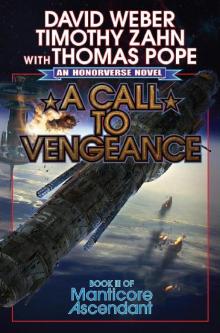 A Call to Vengeance
A Call to Vengeance March Upcountry
March Upcountry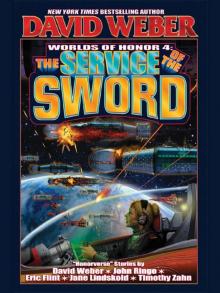 The Service of the Sword
The Service of the Sword Worlds of Honor
Worlds of Honor The Sword of the South
The Sword of the South Mission of Honor
Mission of Honor A Call to Arms
A Call to Arms The Captain From Kirkbean
The Captain From Kirkbean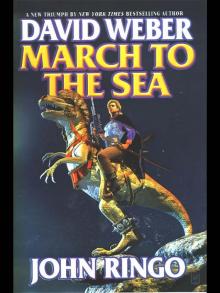 March to the Sea
March to the Sea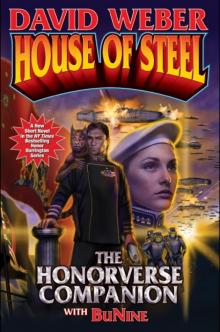 House of Steel: The Honorverse Companion
House of Steel: The Honorverse Companion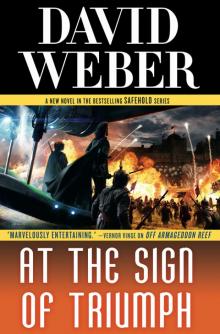 At the Sign of Triumph
At the Sign of Triumph Like a Mighty Army
Like a Mighty Army Heirs of Empire
Heirs of Empire March to the Stars
March to the Stars Oath of Swords
Oath of Swords On Basilisk Station
On Basilisk Station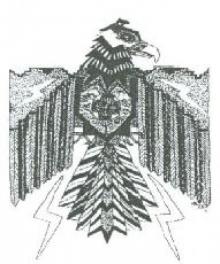 Oath of Swords and Sword Brother
Oath of Swords and Sword Brother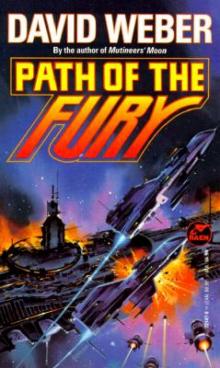 Path of the Fury
Path of the Fury A Mighty Fortress
A Mighty Fortress War of Honor
War of Honor 1633
1633 In Fury Born
In Fury Born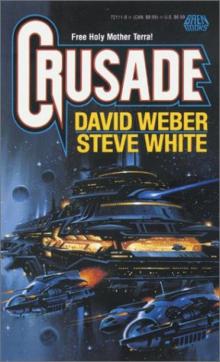 Crusade
Crusade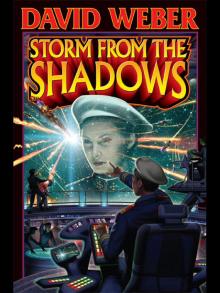 Storm From the Shadows
Storm From the Shadows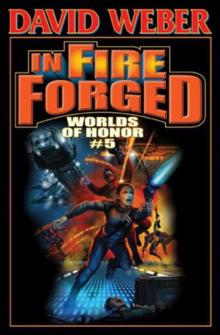 In Fire Forged
In Fire Forged A Beautiful Friendship
A Beautiful Friendship Into the Light
Into the Light Shadow of Freedom
Shadow of Freedom How Firm a Foundation
How Firm a Foundation The Apocalypse Troll
The Apocalypse Troll More Than Honor
More Than Honor Crown of Slaves
Crown of Slaves The Gordian Protocol
The Gordian Protocol The Armageddon Inheritance
The Armageddon Inheritance Out of the Dark
Out of the Dark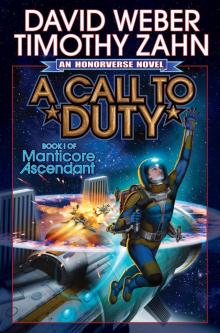 A Call to Duty
A Call to Duty The Shadow of Saganami
The Shadow of Saganami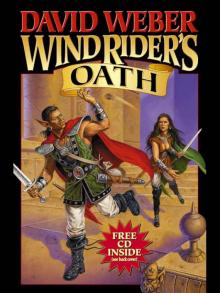 Wind Rider's Oath
Wind Rider's Oath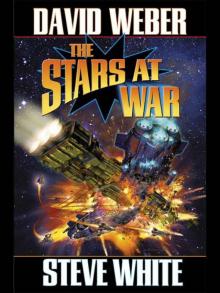 The Stars at War
The Stars at War Uncompromising Honor - eARC
Uncompromising Honor - eARC Fire Season
Fire Season A Rising Thunder
A Rising Thunder Off Armageddon Reef
Off Armageddon Reef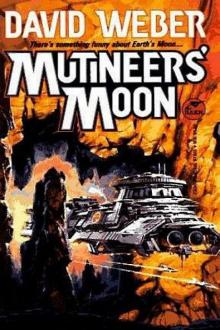 Mutineer's Moon
Mutineer's Moon Hell Hath No Fury
Hell Hath No Fury Worlds of Weber
Worlds of Weber Through Fiery Trials--A Novel in the Safehold Series
Through Fiery Trials--A Novel in the Safehold Series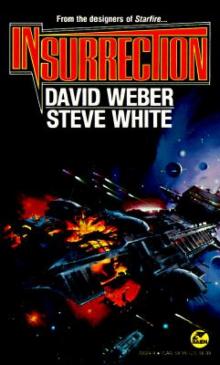 Insurrection
Insurrection By Heresies Distressed
By Heresies Distressed War Maid's Choice
War Maid's Choice At All Costs
At All Costs Shadow of Victory
Shadow of Victory Through Fiery Trials
Through Fiery Trials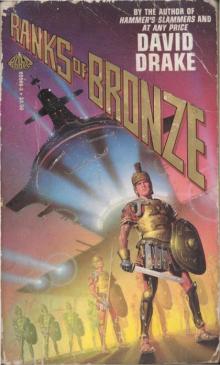 Ranks of Bronze э-1
Ranks of Bronze э-1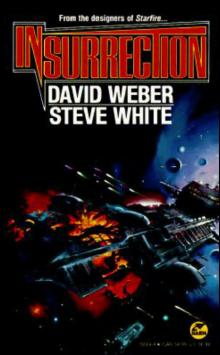 The Insurrection
The Insurrection Safehold 10 Through Fiery Trials
Safehold 10 Through Fiery Trials Old Soldiers
Old Soldiers In Death Ground s-2
In Death Ground s-2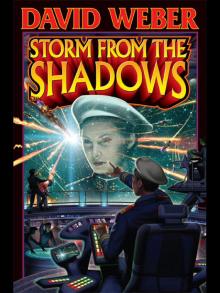 Storm from the Shadows-OOPSIE
Storm from the Shadows-OOPSIE In Enemy Hands hh-7
In Enemy Hands hh-7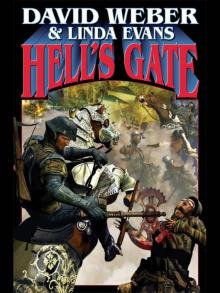 Hell's Gate-ARC
Hell's Gate-ARC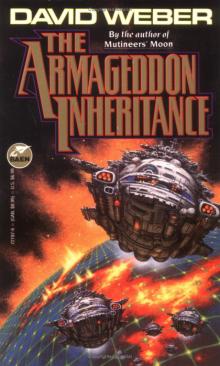 The Armageddon Inheritance fe-2
The Armageddon Inheritance fe-2 War Maid's choice wg-4
War Maid's choice wg-4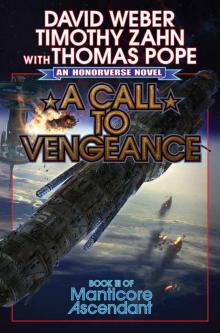 A Call to Vengeance (Manticore Ascendant Book 3)
A Call to Vengeance (Manticore Ascendant Book 3)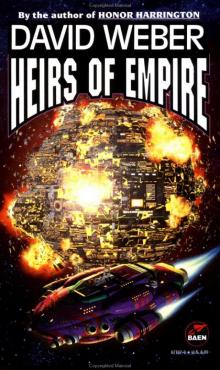 Heirs of Empire fe-3
Heirs of Empire fe-3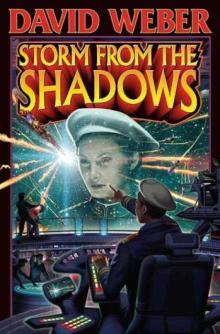 Storm From the Shadows si-2
Storm From the Shadows si-2 Honor Among Enemies hh-6
Honor Among Enemies hh-6 Changer of Worlds woh-3
Changer of Worlds woh-3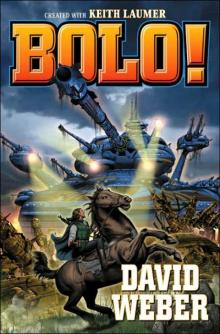 Bolo! b-1
Bolo! b-1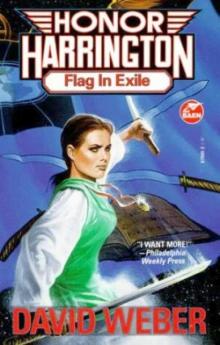 Flag In Exile hh-5
Flag In Exile hh-5 Empire from the Ashes
Empire from the Ashes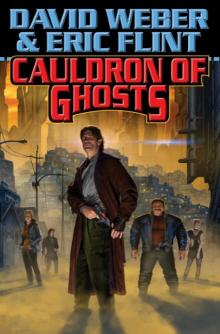 Cauldron of Ghosts
Cauldron of Ghosts Torch of Freedom
Torch of Freedom March To The Sea im-2
March To The Sea im-2 Shadow of Saganami
Shadow of Saganami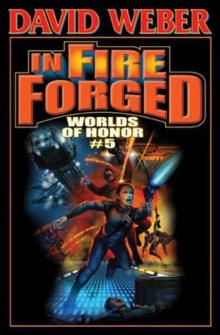 In Fire Forged: Worlds of Honor V-ARC
In Fire Forged: Worlds of Honor V-ARC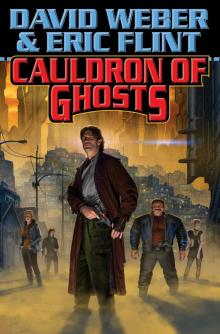 Cauldron of Ghosts (eARC)
Cauldron of Ghosts (eARC)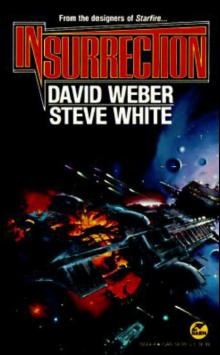 Insurrection s-4
Insurrection s-4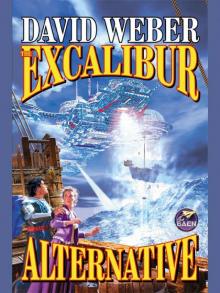 The Excalibur Alternative
The Excalibur Alternative Shadow of Freedom-eARC
Shadow of Freedom-eARC The Short Victorious War
The Short Victorious War Manticore Ascendant 1: A Call to Duty (eARC)
Manticore Ascendant 1: A Call to Duty (eARC)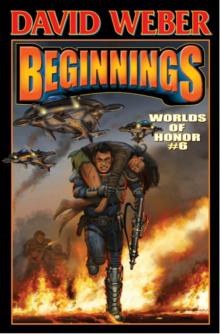 Beginnings-eARC
Beginnings-eARC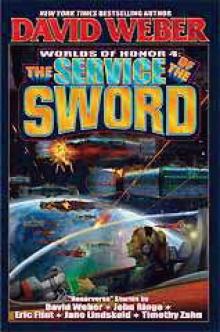 The Service of the Sword woh-4
The Service of the Sword woh-4 The Sword of the South - eARC
The Sword of the South - eARC Treecat Wars sh-3
Treecat Wars sh-3 Worlds of Honor woh-2
Worlds of Honor woh-2 Fire Season sk-2
Fire Season sk-2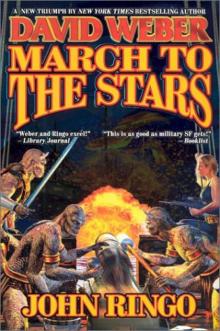 March To The Stars im-3
March To The Stars im-3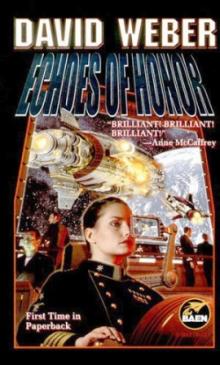 Echoes Of Honor hh-8
Echoes Of Honor hh-8 A Beautiful Friendship mth-1
A Beautiful Friendship mth-1 The Universe of Honor Harrington mth-4
The Universe of Honor Harrington mth-4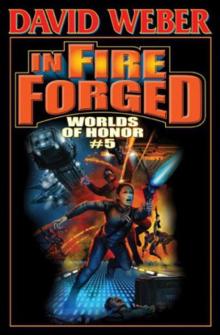 In Fire Forged: Worlds of Honor V
In Fire Forged: Worlds of Honor V Mission of Honor-ARC
Mission of Honor-ARC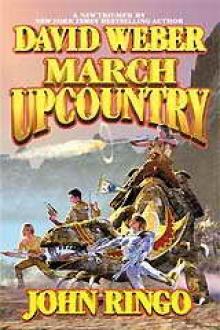 March Upcountry im-1
March Upcountry im-1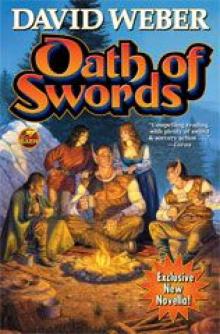 Sword Brother wg-4
Sword Brother wg-4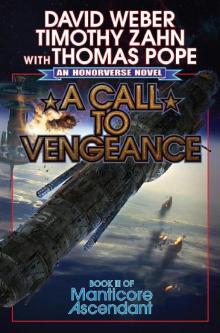 Manticore Ascendant 3- A Call to Vengeance
Manticore Ascendant 3- A Call to Vengeance We Few
We Few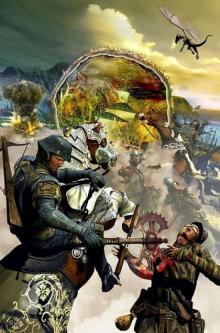 Hell's Gate m-1
Hell's Gate m-1 Throne of Stars
Throne of Stars Empire of Man
Empire of Man The War God's Own wg-2
The War God's Own wg-2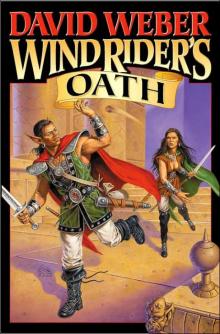 Wind Rider's Oath wg-3
Wind Rider's Oath wg-3 A Rising Thunder-ARC
A Rising Thunder-ARC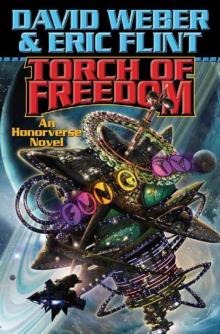 Torch of Freedom wos-2
Torch of Freedom wos-2 War Of Honor hh-10
War Of Honor hh-10 How Firm a Foundation (Safehold)
How Firm a Foundation (Safehold)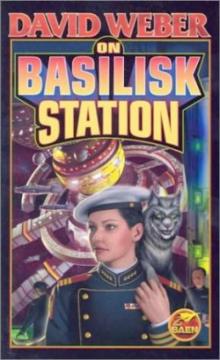 On Basilisk Station hh-1
On Basilisk Station hh-1 The Honor of the Qween hh-2
The Honor of the Qween hh-2 War Maid's Choice-ARC
War Maid's Choice-ARC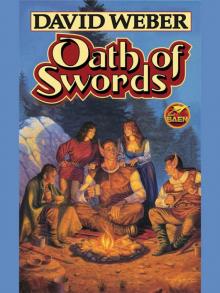 Oath of Swords-ARC
Oath of Swords-ARC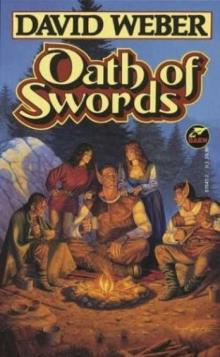 Oath of Swords wg-1
Oath of Swords wg-1 A Beautiful Friendship-ARC
A Beautiful Friendship-ARC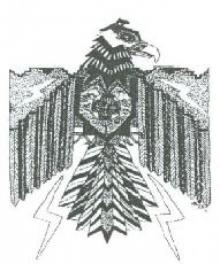 Sword Brother
Sword Brother Shiva Option s-3
Shiva Option s-3 Sir George And The Dragon
Sir George And The Dragon Ashes Of Victory hh-9
Ashes Of Victory hh-9 A Rising Thunder hh-13
A Rising Thunder hh-13 The Road to Hell - eARC
The Road to Hell - eARC Hell Hath No Fury m-2
Hell Hath No Fury m-2 The Road to Hell (Hell's Gate Book 3)
The Road to Hell (Hell's Gate Book 3)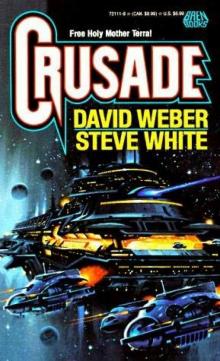 Crusade s-1
Crusade s-1 Field Of Dishonor hh-4
Field Of Dishonor hh-4 The Honor of the Queen
The Honor of the Queen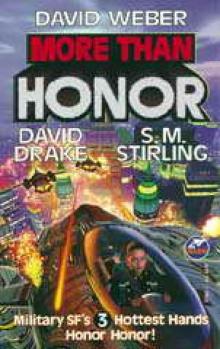 More Than Honor woh-1
More Than Honor woh-1 In Fury Born (ARC)
In Fury Born (ARC)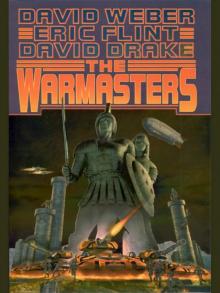 The Warmasters
The Warmasters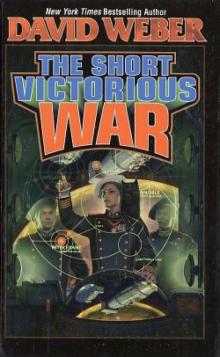 The Short Victorious War hh-3
The Short Victorious War hh-3 The Shadow of Saganami si-1
The Shadow of Saganami si-1 Empire of Man 01 - March Upcountry
Empire of Man 01 - March Upcountry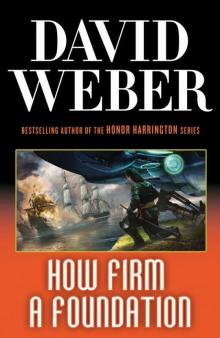 How firm a foundation s-5
How firm a foundation s-5 Treecat Wars
Treecat Wars